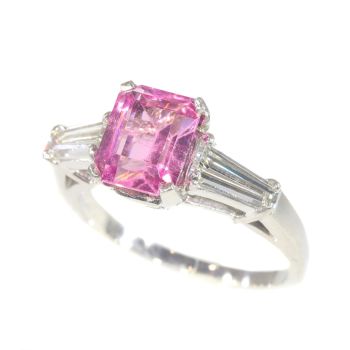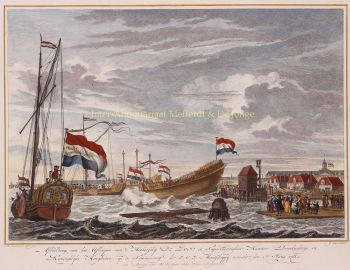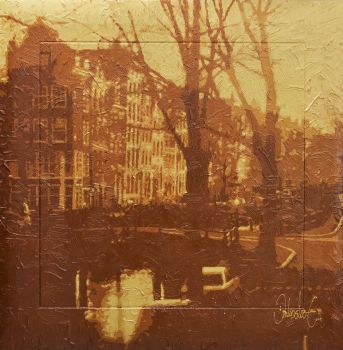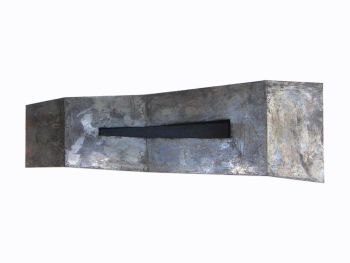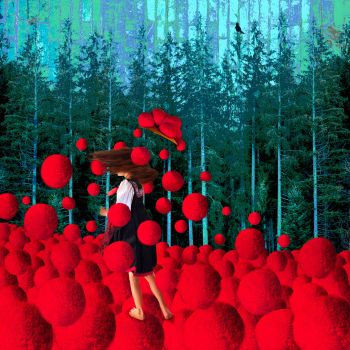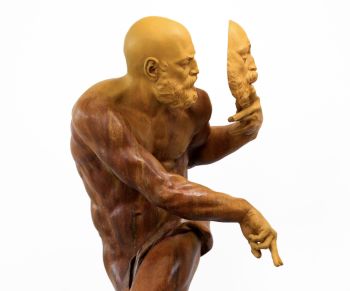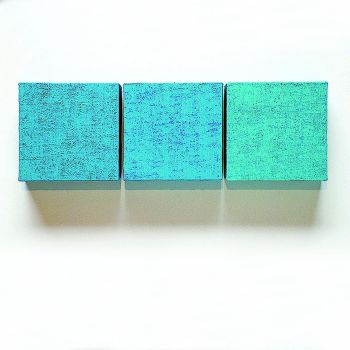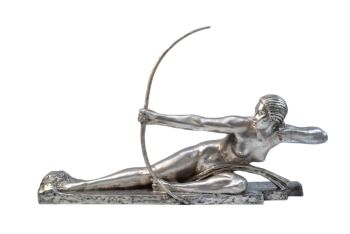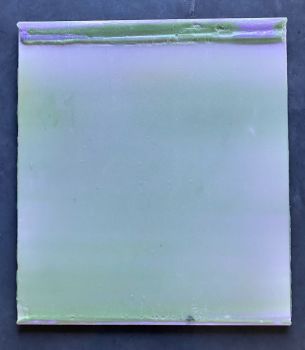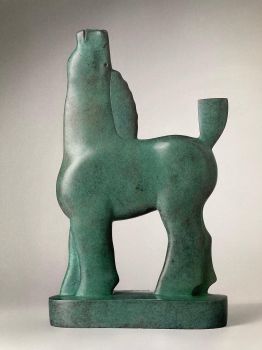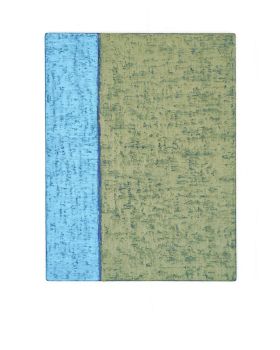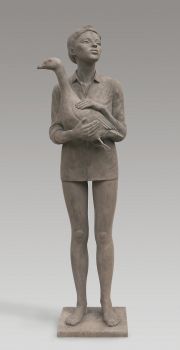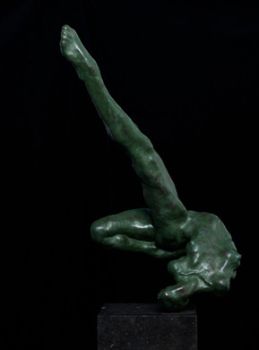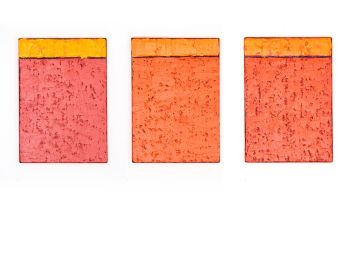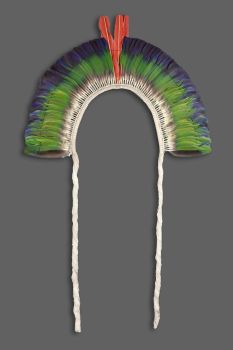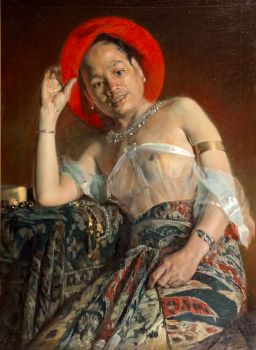A JAPANESE MODEL OF A NORIMONO, A PALANQUIN 1650 - 1700
Unknown artist
Zebregs & Röell - Fine Art - Antiques
- About the artworkA JAPANESE MODEL OF A NORIMONO, A PALANQUIN
Late 17th century
The fully equipped and working palanquin in black lacquer ground decorated in gold hiramaki-e, metal and tissue
H. 23 x L. 25.8 x D. 18.6 cm
Yoke L. 68 cm
Note:
A rare model of a Japanese palanquin, norimono. Another one is in the Ethnographic Collection of the National Museum of Denmark and one in the Musée des Beaux-Arts de Brest. Between 1641 and 1858 the Dutch were the only Westerns allowed in Japan. Like the local Japanese rulers, the Dutch had to make a yearly voyage from their settlement in the bay of Nagasaki to the court of the Shogun in Edo (Tokyo) to pay their respect and bring presents from the West. This was the only time in the year the Dutch were allowed off their small island Deshima. They travelled in norimono like this model one carried by four men. Sometimes a hole was made in the foot-end of the palanquin allowing the Dutchmen to stretch their legs. The Japanese thought the Dutch could not bend their knees and therefore sat on chairs. These models were presented during the hina matsuri, the dolls festival, as the vehicle of a lord’s spouse. - About the artist
It might happen that an artist or maker is unknown.
Some works are not to be determined by whom it is made or it is made by (a group of) craftsmen. Examples are statues from the Ancient Time, furniture, mirroirs, or signatures that are not clear or readible but as well some works are not signed at all.
As well you can find the following description:
•“Attributed to ….” In their opinion probably a work by the artist, at least in part
•“Studio of ….” or “Workshop of” In their opinion a work executed in the studio or workshop of the artist, possibly under his supervision
•“Circle of ….” In their opinion a work of the period of the artist showing his influence, closely associated with the artist but not necessarily his pupil
•“Style of ….” or “Follower of ….” In their opinion a work executed in the artist’s style but not necessarily by a pupil; may be contemporary or nearly contemporary
•“Manner of ….” In their opinion a work in the style of the artist but of a later date
•“After ….” In their opinion a copy (of any date) of a work of the artist
•“Signed…”, “Dated….” or “Inscribed” In their opinion the work has been signed/dated/inscribed by the artist. The addition of a question mark indicates an element of doubt
•"With signature ….”, “With date ….”, “With inscription….” or “Bears signature/date/inscription” in their opinion the signature/ date/ inscription has been added by someone other than the artist
Are you interested in buying this artwork?
Artwork details
Related artworks
- 1 - 4 / 12
Artiste Inconnu
UN FILET D'IVOIRE D'UN DUTCHMAN TENANT UN COCKEREL18th century
Prix sur demandeZebregs & Röell - Fine Art - Antiques
Artiste Inconnu
A Japanese bronze Hu flower vase, Edo / Meiji, 19th century19th century
Prix sur demandeMenken Works of Art
Artiste Inconnu
The Stamford Raffles Secretaires.1800 - 1813
Prix sur demandeZebregs & Röell - Fine Art - Antiques
1 - 4 / 24Artiste Inconnu
UNE COLLECTION DE QUATRE BOÎTES À BIBLE EN IVOIRE SRI LANKAN18th century
Prix sur demandeZebregs & Röell - Fine Art - Antiques
Artiste Inconnu
UN PLAT EN ARGENT LOBBED INDONÉSIEN INSOLITElate 17th
Prix sur demandeZebregs & Röell - Fine Art - Antiques
 Sélectionné par
Sélectionné parDanny Bree
Artiste Inconnu
The bell of the VOC fortress in Jaffna, Sri Lanka1747
Prix sur demandeZebregs & Röell - Fine Art - Antiques
 Sélectionné par
Sélectionné parDanny Bree
Artiste Inconnu
UN FILET D'IVOIRE D'UN DUTCHMAN TENANT UN COCKEREL18th century
Prix sur demandeZebregs & Röell - Fine Art - Antiques
Artiste Inconnu
Deux portraits d'étude du Mas Marco Kartodikromo1900 - 1950
Prix sur demandeZebregs & Röell - Fine Art - Antiques
Artiste Inconnu
Japanese transition-style lacquer coffer 1640 - 1650
Prix sur demandeZebregs & Röell - Fine Art - Antiques
1 - 4 / 24- 1 - 4 / 24
Artiste Inconnu
UN FILET D'IVOIRE D'UN DUTCHMAN TENANT UN COCKEREL18th century
Prix sur demandeZebregs & Röell - Fine Art - Antiques
Artiste Inconnu
UNE TÊTE DE PLUME TRIBU JURUNA1900 - 1950
Prix sur demandeZebregs & Röell - Fine Art - Antiques
1 - 4 / 12



